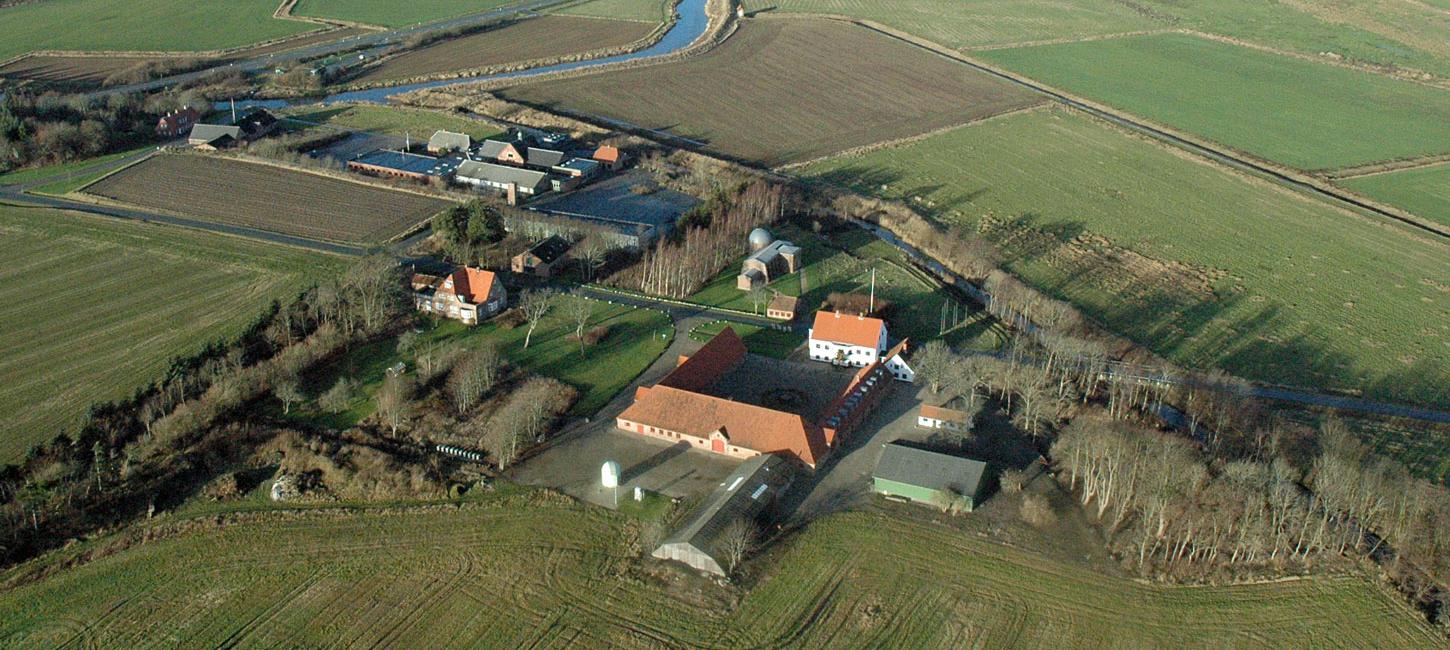
Skærum Mølle
Historical site which today houses the Folk University Centre (Danish University Extension Centre) and a number of unique exhibitions on art, cultural history, geology and a historical forest.
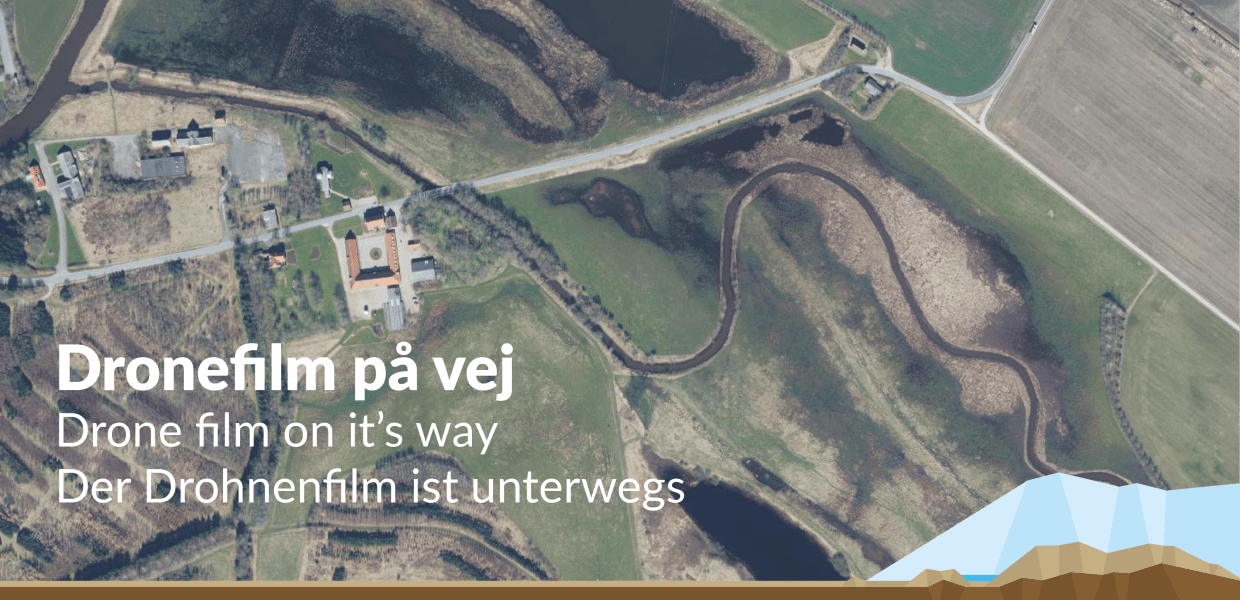
Photo:SDFIKORT
The History
The site itself has its origin from just after the last ice age when two major melt water valleys (Storå and Lilleå) converged before flowing into what is now Nissum Fjord. The site has had strategic importance as a ford for a very long time and local finds show that people have lived here since the Stone Age. Traces of vast settlements from the Iron Age have also been found, and potsherds show that people living here were involved in trade with the Romans. The Vikings have also left signs of their presence and at the end of the 19th century a grave of a very wealthy Viking woman was found containing remnants of fine clothing, ornamented belt buckles and rings. In 2009 signs of a Viking town were discovered through the use of aerial archaeology.
From Medieval Times Until Today
In early Medieval times the area belonged to the royal family which passed the lands on to the Cistercian Monastery in Tvis which owned the land until the Reformation in the first half of the 16thcentury. In 1550 the squire at Nørre Vosborg took ownership of Skærum Mølle which lasted until 1905. During this period Skærum Mølle (Mølle = Mill) served many different purposes. It housed a still that was so efficient that it drove other stills in the county out of business and naturally enough a local inn, a post office and a tollbooth were also part of the business. Local deposits of clay formed the basis for the production of tiles that grew to a regular industry when the Villemoes brothers took over the tenancy in 1879 and later bought the estate in 1905. The brickworks continued until 1957 and during this period a co-operative dairy and a power plant were also established while the estate continued to operate as an agricultural farm.
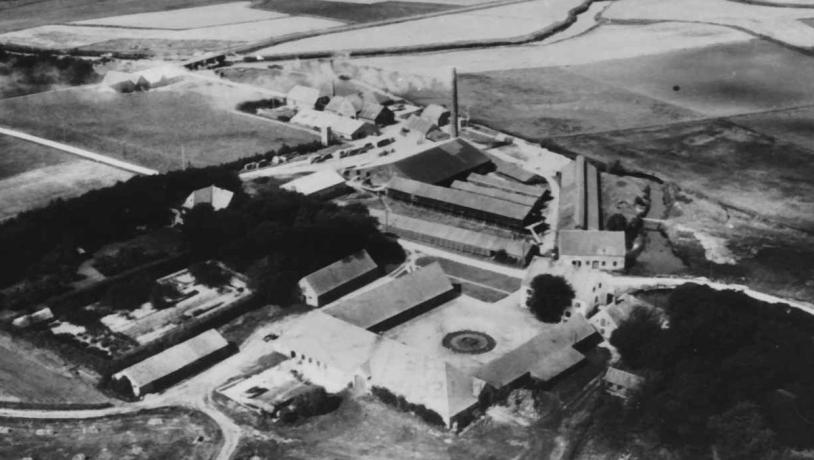
Photo:Skærum Mølle
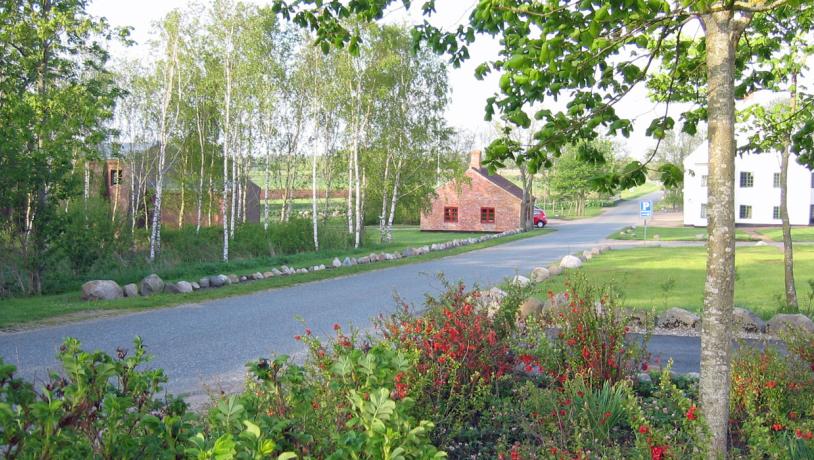
Photo:Geopark Vestjylland
Danish Folk University
Skærum Mølle was owned by the Villemoes family until 1987 when it was sold and transformed into the first and only extramural department of the Danish Folk University – a university extension centre. Today Skærum Mølle, apart from serving as a University Centre with lecture hall and accommodation facilities, also hosts a number of exhibitions. The Folk University Centre works to promote the link between sciences, arts and society and serves as a centre for the development of democratic and open university education. The Folk University Centre hosts lectures and seminars and is a centre for the exchange of knowledge and experiences between many different groups.
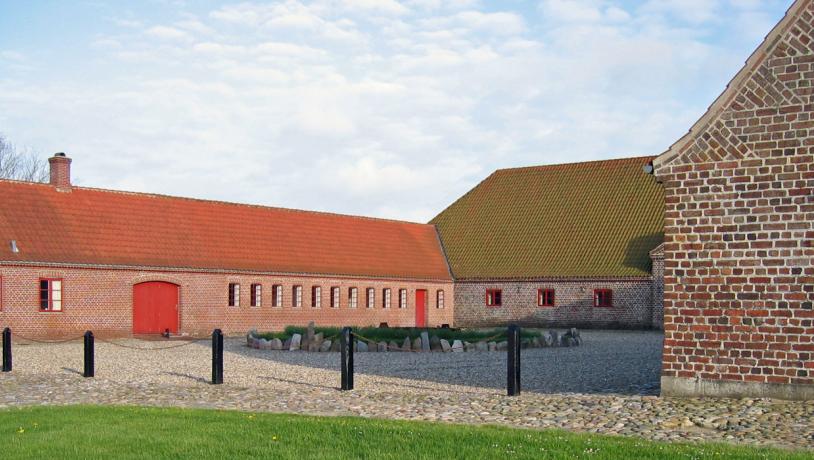
Photo:Geopark Vestjylland
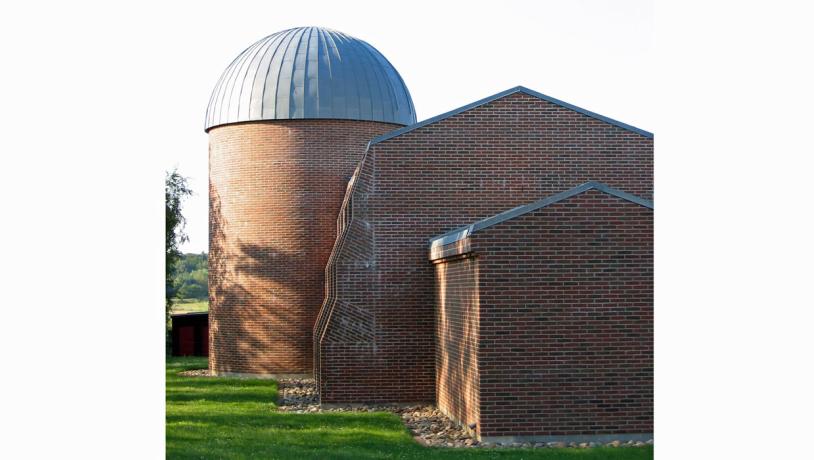
Photo:Geopark Vestjylland
The House of Stones and Stars
The House for Stones and Stars, designed by geologist and world famous artist Per Kirkeby, was built in 1996 on the old brickworks site. Per Kirkeby has created several brick sculptures around the world. The House for Stones and Stars is one of these sculptures. The house contains an exhibition of rocks and minerals, a considerable study collection, collected and donated by the amateur geologist Mr. Carlo Møller from Holstebro. A sun observatory is under construction. A series of events, including lectures and courses with experts in geological and astronomical topics are arranged, including star-watching evenings once a month. The astronomer Ph.D. Lars Petersen is attached to the centre.
The Old Co-op Museum
This is an example of a shop from the early days of the co-ops in the years 1910-1915. The old co-op has been established in the former hen house of Skærum Mølle, and the building exhibits furniture, merchandise etc., collected from a number of co-ops – mostly in West Jutland. Here you can see wooden shoes, chewing tobacco, coffee substitute, soap, coffee pots, nails, wartime ration coupons, cash registers and herring barrels.
The Historical Forest
In 2009 the Nature Agency under the Ministry of Environment established a wood aimed to illustrate the development of forest in Denmark after the last Ice Age. The wood is divided into five sections showing:
I. 9000 – 8000 B.C. Birch and Scotch pine
II. 8000 – 6000 B.C. Hazel with aspen, birch and Scotch pine
III. 6000 – 4000 B.C. Older Lime era with lime, oak, elm, alder, birch and Scotch pine
IV. 4000 – 1000 B. C. Younger Lime era with ash, lime, oak, elm, alder, birch and Scotch pine
V. 1000 – 200 B.C. Beech era with beech, ash, lime, oak, elm, alder, birch and Scotch pine and Norwegian spruce
Cooperation with the aspiring Geopark
Skærum Mølle Folk University Centre and the geopark carried out a joint project in 2016 with a geological seminar with a three-day afternoon programme on the link between geology and cultural history. The outcome of the seminar will be presented in a report that will be made available to the general public on our website. In cooperation with the pilot Nature park in Nissum Fjord, the University Centre and the geopark are also investigating the possibility of establishing a joint welcome centre at Skærum Mølle.